Why we ran it: To find out what sort of performance car the GR Supra really is, and whether it has the character to live up to the name
Month 3 - Month 2 - Month 1 - Prices and specs
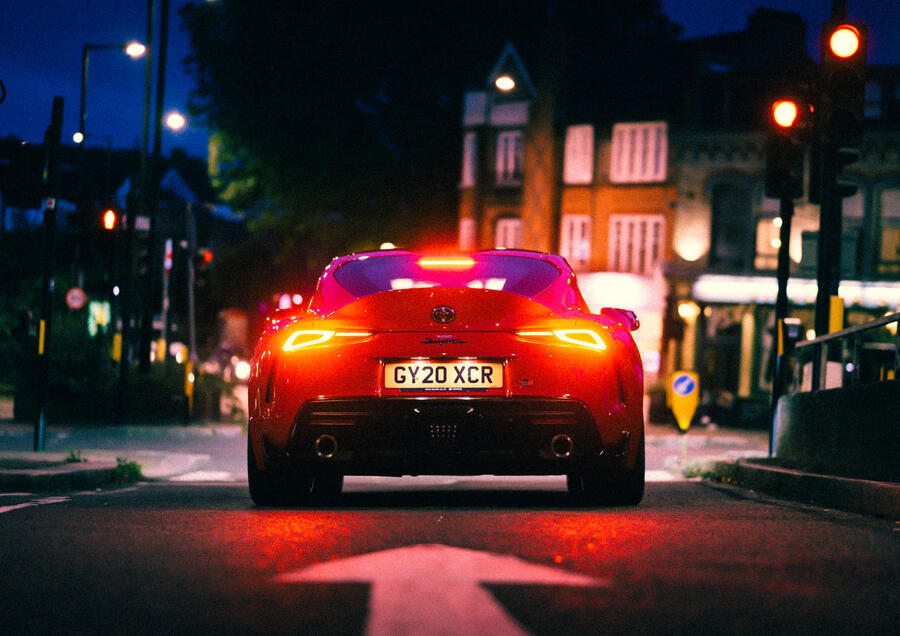
Life with a Toyota Supra: Month 3
Is it a GT or sports car or both? And does its sense of identity transcend the BMW underpinnings? Our final verdict tells all - 23 December 2020
We asked an awful lot of the reincarnated Toyota Supra, don’t you think?
‘We’ being the petrolhead community at large, although particularly its younger members. And unfairly so. After the ‘A80’ Supra of the 1990s, tuning culture and Hollywood wrote such hallucinatory cheques that any ‘A90’ successor couldn’t hope to cash them unless it arrived with a four-figure horsepower bomb and spitting flames. Expectation was sky-high. We demanded something exceptional and extraordinary. Something completely unrealistic.
Back in the real world, we were eventually given a junior GT with 335bhp, whose styling cheekily riffs on that of the Ferrari F12 Berlinetta, and whose underpinnings are supplied by BMW, no less. All for £54,000. I don’t want to accuse people of being ungrateful, but at a time when the outlook for old-school sports cars on occasion appears pretty bleak, that ain’t a bad set of attributes…
Which isn’t to say the new Supra is perfect. Even when we took delivery of GY20 XCR earlier this year, we knew it wasn’t the sharpest tool in the class dynamically and possessed something of a confused identity. Japanese sports cars are often individualistic and eccentric – in recent years, just look at the Mazda RX-8, Honda Civic Type R and tri-motor V6-hybrid Honda NSX – so the fact that the Supra shares so much with BMW’s Z4 still feels quite awkward, even now.
However, an extended period of time with a car was meant to shed light on whether any of that would really matter to those using it day in, day out. Complaining about the fact that the Supra isn’t an entirely bespoke, rip-roaring animal of a performance car reminds me of the time many of us lost our minds because the Porsche 911 GT3 went PDK only. Far from writing its own obituary, that car won every group test in sight, and even today more than two-thirds of GT3 buyers go for the automatic option. What many of us would consider to be ‘pedigree’ clearly isn’t everything.
An excellent example of this is the Supra’s interior. No, I never could escape the BMW-ness of it all, which extends from the rotary infotainment controller, to the window switches, to the steering wheel buttons, to the… well, basically everything. But it worked, and it looked good, and it allowed the superbly low-slung, pill-box architecture of the cabin to shine through, free from niggle and irritations.
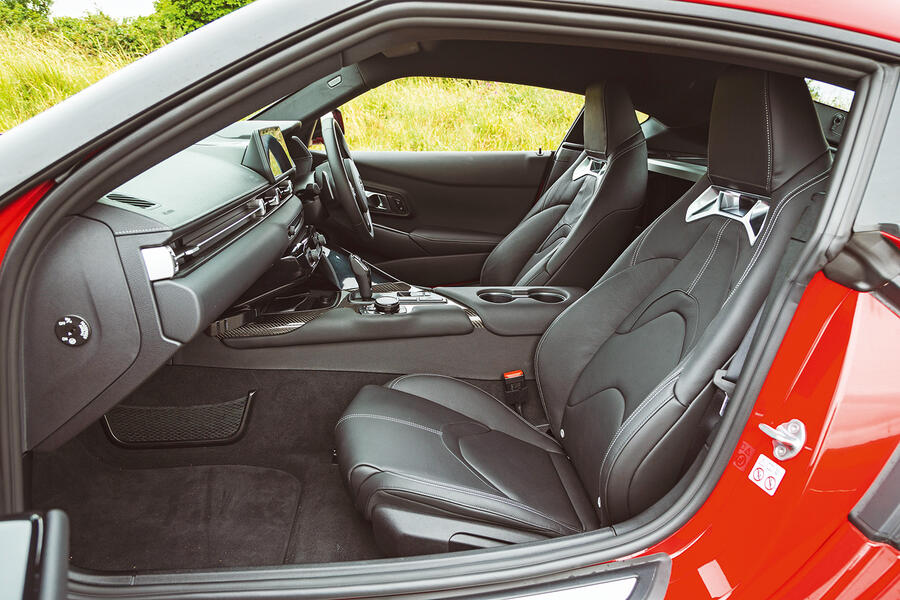
Our car – in Pro specification, which adds £1300 to the £53,035 base price – also came with the full gamut of equipment, including adaptive cruise control, a head-up display (useful on autobahns), a reversing camera and wireless phone charging. Consider this, and the engine, and the design, and you have to say the Supra is good – no, great – value.
All I’d really change inside are some of the driving controls. The basic ergonomics are excellent – pure GT car, long of leg and short of arm – but the seats don’t envelop you as they do in a BMW M2 Competition or Porsche 718 Cayman, and the unedifying, stubby paddles are affixed to a steering wheel that does everything right apart from, strangely, having too much material matter at nine and three o’clock.
There are more significant reasons why the Supra never felt as serious as its premium-badge rivals, but the little things can help create that irresistible sense of intent, or lack thereof, in sports cars. The Supra felt toy-like at times.
And it’s fair to say this translated to the driving experience. BMW’s ‘B58’ straight six is a peach – sonorous, glass smooth and torque rich – but I’m not sure the Supra’s chassis set-up engineers ever loved it that much.
The steering response always seemed just a fraction too keen for the more languid roll rates, and along with the weight of the engine this meant the crisp, perfectly coherent turn-in you find with mid-engined options in this class was conspicuously missing. Mid-engined options and the four-cylinder Jaguar F-Type, that is, which put the Supra to the sword during an impromptu twin test. It wasn’t night and day, but the Jag exposed the Toyota’s gentle understeer balance and faint unease when taken by the scruff. The Toyota is fast, hugely so, but a little woolly and distinctly traction-limited at times.
Given that the service interval is 10,000 miles (as with any other Toyota) and we covered only around 5500 miles, there’s nothing to say about that element of the ownership experience, unfortunately. However, the Supra was reasonably light on oil and the Michelin Pilot Super Sport tyres proved seriously robust, losing just 2mm of tread during our time with the car – time that may have included one or two burnouts. Fuel economy also hovered around 32mpg, with touring runs returning closer to 38mpg, which in my book is more than decent.
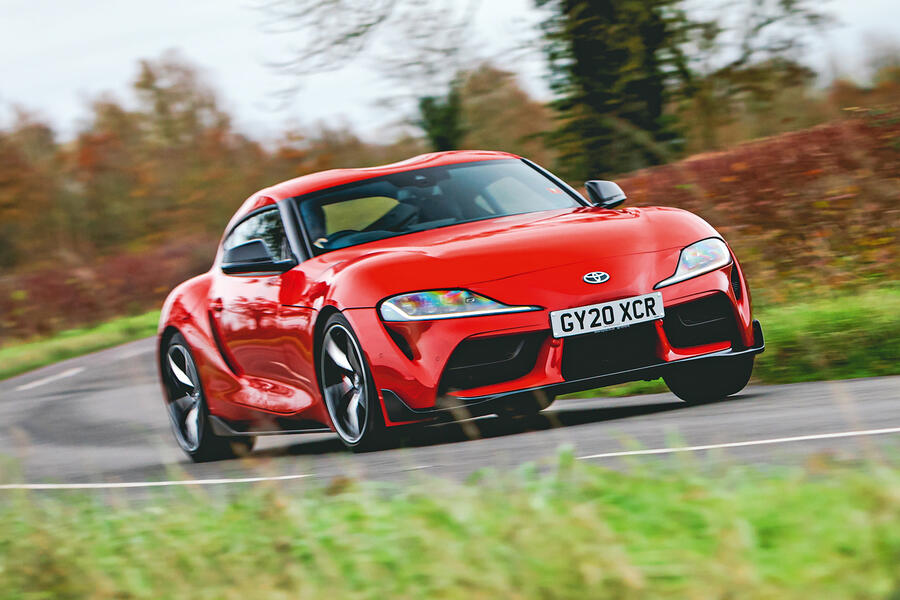
And it was on two epic touring stints that the Supra really came into its own, beyond simply being an enormously easy car to get along with and blat about in doing everyday things. We took it to Germany and Italy, on separate occasions, where its comparatively soft springing gave it better wafting legs than anything else in this class.
Being sufficiently large to swallow enough luggage for two people for 10 days (and that luggage then damping the slight boom you get at speed from the rear tyres, due to the lack of physical partition), the sizeable boot is another reason to go for the Supra as a GT-type thing over mid-engined rivals. You just get in and go, in your Ferrari 812 Superfast-lite, except you don’t need to worry about leaving it in less salubrious environments.
In the end, anybody spending more than £50,000 has the right to ask a lot. But you have to ask fair questions. The Supra isn’t the most rewarding driver’s car in its class, and during group tests it can fail to make a splash on the day, when opinions have to be formed fast. But as a decently exotic and usable everyday option, it genuinely takes some beating.
It’s a bit of an underdog, but one that’s slickly executed, has some pantomime and has the potential for long-lasting ownership satisfaction.
Second Opinion
There were two standout thoughts that stuck in my mind after a couple of days with the Supra. The first was that it’s much more refined than it has any real right to be. Linked to that, the second was that Toyota has left the door wide open for a more hardcore variant in due course.
Lawrence Allan
Love it:
Long legs Effortless over distance by the standards of the class, the Supra captures the GT atmosphere well.
Six-pot engine It acts as the rich, linear core of the car’s persona and feels special without trying too hard.
Dimensions This certainly isn’t a car whose width you have to adjust for on interesting B-roads.
Loathe it:
Lack of dynamism This isn’t the sharpest chassis in the class. Pervasive understeer balance marks its card.
A few driving controls More serious seats, gearshift paddles and a better steering wheel would elevate the feel of the place.
Final mileage: 5488
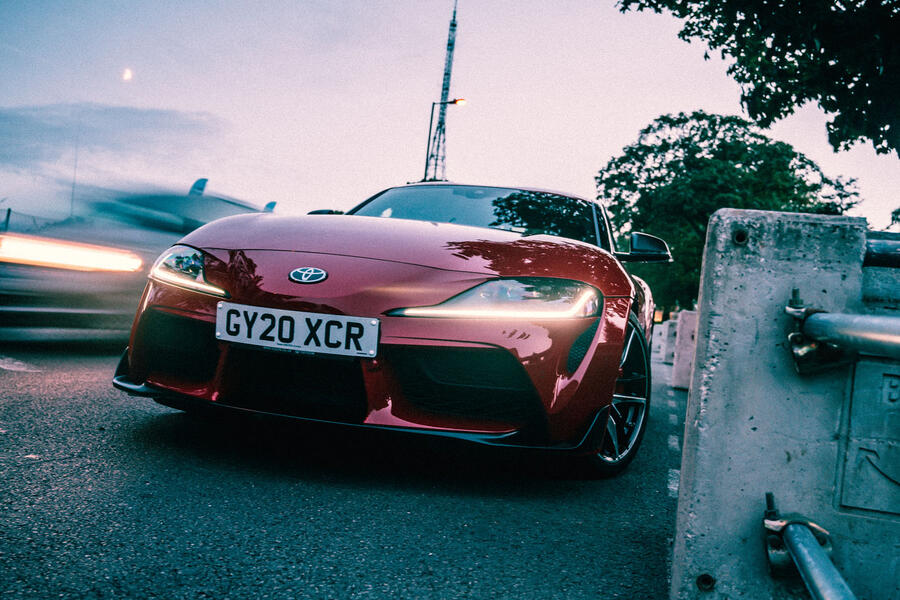
Supra more a tyre-nibbler than a tyre-muncher - 2 December 2020
I’ve already praised the Michelin Pilot Super Sport tyres fitted to the Supra, and now I want to add another plaudit, because my excellent digital tread gauge says that in more than 5000 miles of driving (much of it on the motorway but with plenty of hard graft on more exciting roads), those tyres have lost only about 1.0-1.5mm of rubber. Chapeau, Michelin.
Mileage: 5229
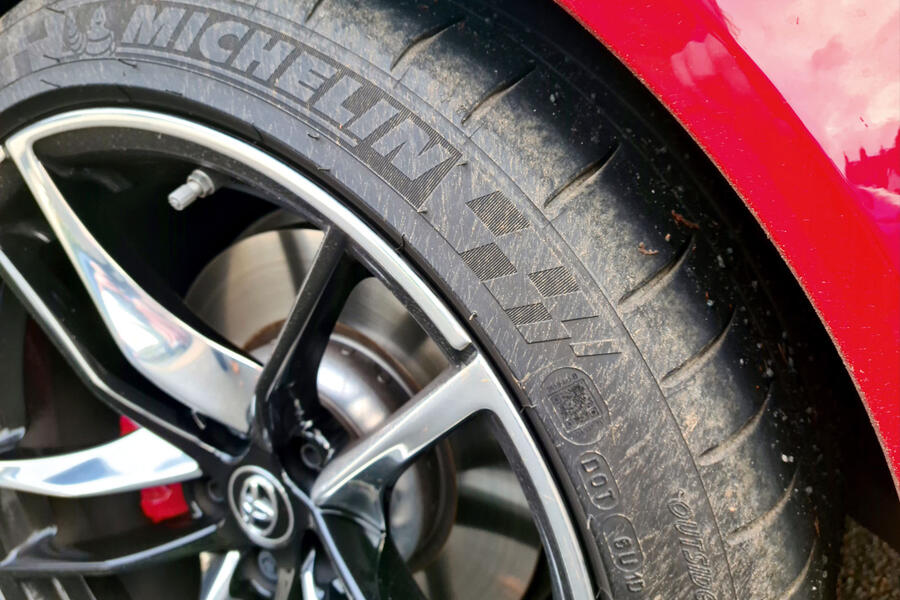
F-Type firms up our opinions on the Supra’s driving experience - 18 November 2020
I’ve realised, fully three months into our time with the Supra, that a topic I haven’t properly addressed is how good it is to drive.
That hasn’t been deliberate, more a subconscious act of cowardice, stemming from the fact that it’s quite a complex car to decipher and about which to draw rock-solid conclusions.
I certainly don’t envy those asked to attend its launch last May, because launches are already hard enough with the early flights, bombardment of information, unfamiliar roads and sometimes only an hour or two at the wheel without the car itself being entirely new, quite coy and reluctant to give you an easy read.
Trips to Italy and Germany have already shown me just how good the Supra is over distance. It’s exceptionally good – quiet on the move and soft enough on its springs to possess a gait much more relaxed than its short wheelbase suggests.
So, all things considered, there’s less resting on its B-road ability than there is for something more focused and uncompromising, like the BMW M2 Competition. Therefore if, from the perspective of an owner using it daily, the Supra does just enough to warrant taking the long route home, say two times out of five, then for me it does enough as an all-rounder.
So, does it? To help refine my thinking, I spent some time in a car that isn’t often discussed in the context of the Supra but is in many ways its most direct and troublesome rival: the four-cylinder F-Type, the P300. In its most basic form, Jaguar’s delightfully snouty coupé costs £54,510. You would imagine that to be far too close for comfort for Toyota, except the smaller Supra has two more cylinders, usefully more torque and the benefit of youth. A fight more intriguing you will struggle to find.
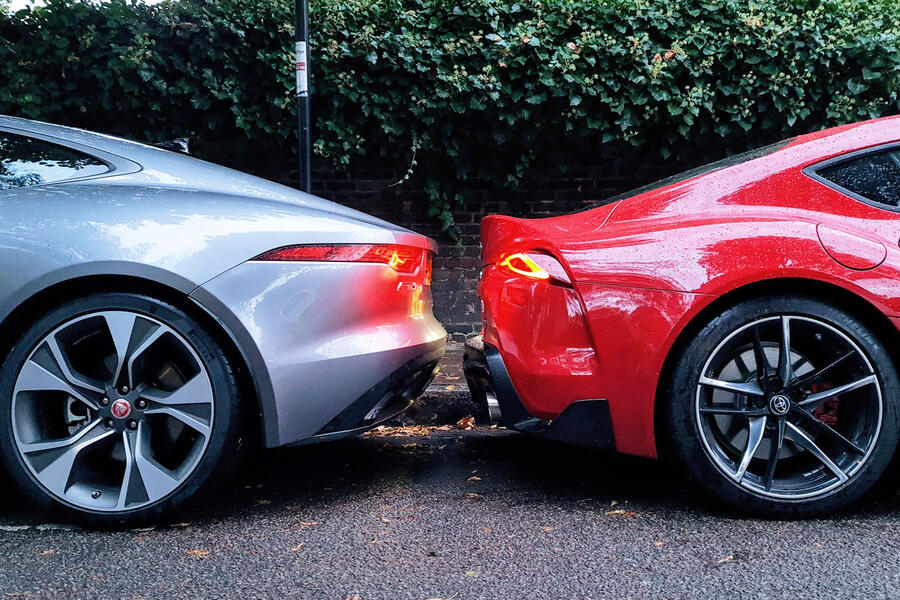
Know first that, along with its more impressive engine, the Toyota is more generously equipped and seems better screwed together, flexing door cards notwithstanding. I would say that the two are equal in terms of kerbside presence as well. Both draw envious eyes, although anecdotal evidence suggests that the public feel more love for the newer and rarer Supra. Equally, the F-Type summons more sense of occasion from within.
Dynamically, the Jag confirmed two things I don’t like so much about the Supra. For one, it has a subtle but definite understeer balance, and you don’t need to drive anywhere near the limit of grip to feel it. The F-Type powers through corners from its hips; the nose of its upstart rival seems ready to be drawn wide.
None of which is to say the Supra is a manic understeerer. It’s quite sensitive to the texture of the road surface and at times begins to oversteer without much provocation on the exit of long-radius corners where the suspension can be loaded up gradually. At times like this, it feels pin-sharp, but at others, even at modest commitment levels, it’s blunter than the Jaguar and indeed any Porsche or BMW M car.
The other element is the steering, which in the Supra is oddly remote – not badly weighted or sluggishly geared, just numb. The Jag’s is lighter and more elasticated yet also more delicate, crisp and communicative. The lighter engine it carries surely helps it in these respects, but there’s a fundamental difference here.
Incidentally, the M2 Competition splits the difference, so Toyota should be able to get more from the Supra. Overall, the Supra does enough to justify its stonking bodywork, so long as you don’t interrogate it much (and, incidentally, it crucified the F-Type, which was on 20in wheels, in terms of ride quality). It’s small, predictable and satisfying to stroke along smaller roads.
But as the Jag proves, there’s more to come from this recipe, which is one, remember, that Toyota hasn’t properly tried to cook for almost 30 years.
Love it:
Tyres Michelin’s Pilot Sport 4S replaced the superb Pilot Sport Supersport, but this is still durable, progressive, supportive and good in the wet.
Loathe it:
Gearbox calibration Sport mode is too ambitious; I don’t want 5500rpm all the time. Elsewhere, shifts aren’t as slick as I know the ZF hardware can deliver.
Mileage: 5013
Another long-distance cruise proves enjoyable - 28 October 2020
The Supra has been abroad again, this time to Italy. It really is a superb tourer; over 2300 miles, nothing about it irritated me. It’s refined on the main routes and handily small on the back roads as you get to your overnight stop. And even with tyre pressures at 2.8 bar (up from 2.2 for autobahns and distance economy), it rode better than its rivals.
Mileage: 4330
Life with a Toyota Supra: Month 2
Steering wheel slip-up - 14th October 2020
Toyota missed an easy win with the steering wheel for the Supra. It has a nice, slim rim, but there’s a weird chunkiness in the spokes at the three and nine o’clock positions that makes you hold it slightly awkwardly, with Lego hands. It should also have changed the BMW paddles, making them larger, more satisfying to pull and frankly more Japanese.
Mileage: 2628
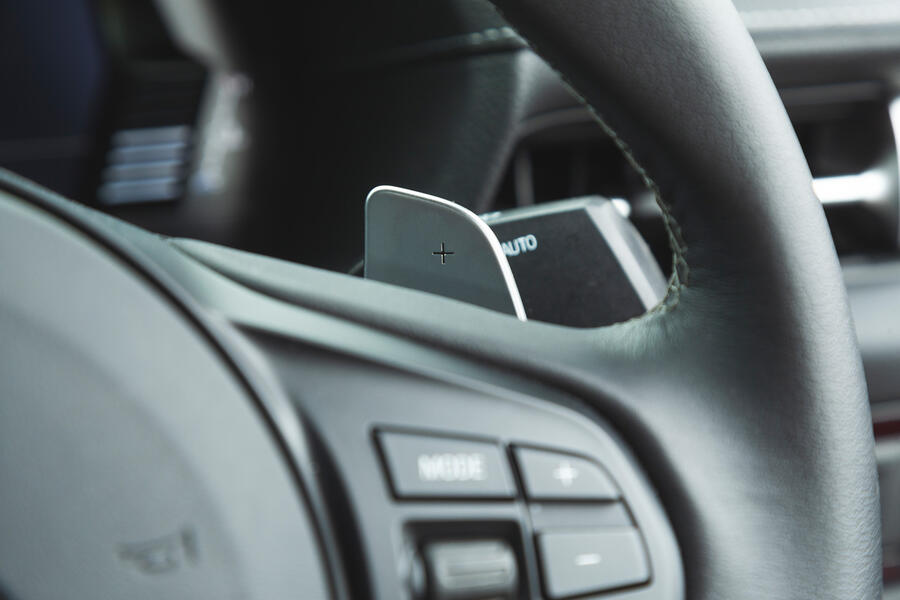
Life with a Toyota Supra: Month 1
Rapid coupé proves its GT credentials on a trip to Germany - 7th October 2020
I’d been waiting – praying, even – for an opportunity to stretch the Supra’s legs, and then, early last month, one arrived.
Would Autocar like to try BMW’s first proper hot hatch, the new 128ti, in pre-prod guise? Of course we would. And because the drive would take place from BMW’s R&D base in the village of Nürburg, it was either fly to Frankfurt then transfer via minibus, or go directly to the ’Ring via forced-induction straight six. Not an especially taxing decision, then, although quarantine bingo overshadowed the build-up. If Germany slid off the government’s exemption list, the whole road trip would be off. Publisher’s orders.
Naturally, Germany had its house in order and the Supra therefore now has another 1000 miles on its odo. Most of those are from autobahn running, where the car seemed to have appreciably more in its locker at its 160mph limiter.
In general, this is a surprisingly quick car over big distances. I mean this not in terms of outright speed – you can wring Ford’s 1.0-litre Ford Fiesta out to 125mph – but the manner in which it achieves them. The condensed frontal area and organic curves of the body mean it doesn’t generate much wind noise, and because of the rubber suspension bushings, the same is true for the Michelin Pilot Super Sport tyres.
Eighth gear is also long (a theoretical 265mph long), which means just over 2000rpm at an 80mph cruise. And yet despite this, the performance is still accessible, because the BMW engine develops all 368lb ft from only 1600rpm – and the Supra is no hulking beast. I recently weighed it at Millbrook and, with a quarter of a tank of fuel, it registered 1497kg.
Okay, that’s more than I’d like for a small-ish coupé but still not a great deal in the context of so much torque.
So progress was pretty effortless, although more support and breadth in the seatbacks and more meat in the steering around the dead-ahead would improve matters, even if achieved artificially. Two-up, the cabin is also hardly the most spacious, but the letterbox view forwards and slim windows make for a superbly secure ambience. Some people will love that for long-distance driving; others will prefer the more open cockpit of, say, the new BMW M440i (if you can bear the grille…).
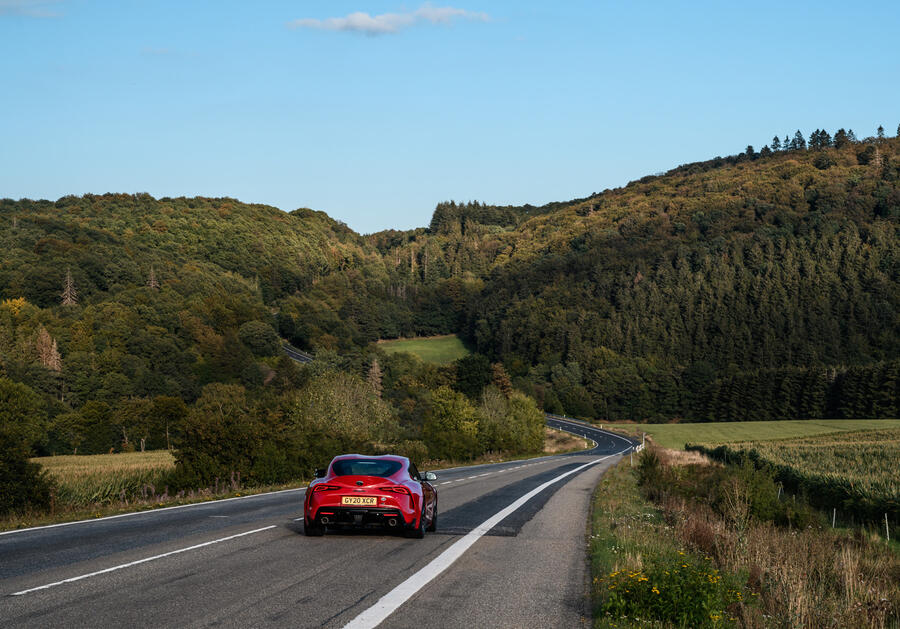
The wildcard in this £50,000 arena is a basic second-hand Porsche 911 of pre-turbo 991 vintage, with both space and the hunkered-down driving position, although it’s noisier on the move than the Supra, no question.
Elsewhere, the Supra’s plastic rear hatch opens to reveal good space, and you can reach into the luggage compartment from the front, which is more useful than you might think. You get a decent 290 litres in total, compared with 320 litres in the much larger Ferrari 812. A crass comparison? Yes and no.
The Supra has half the cylinders, only 42% of the power and far less cachet. But it’s as quick as you’ll ever need, attracts all the attention most of us can tolerate, rides more fluently and costs a mere 21% of the Italian car. You get a smaller slice of the overtly spectacular GT-car cake, but the Supra is enjoyable and unusual and, I think, has no shortage of elegance.
I’m planning on heading to Italy in the next few weeks (for a holiday, not an 812 twin test), pending the quarantine-bingo results. For such a journey, an M2 Competition would be adequate and a Cayman marginally better, but I think the Supra has proved itself better than the lot.
Apart, maybe, from the four-cylinder Jaguar F-Type. Watch this space.
Love it:
Striaght-six motor I’ve now experienced the new S58 engine destined for the M3, but I think the single-turbo B58 sounds sweeter at the top end.
Loathe it:
Touchscreen display It must be taken directly from the convertible Z4, because the autoadjusting brightness calibration is all wrong. It’s unreadable at times.
Mileage: 2260
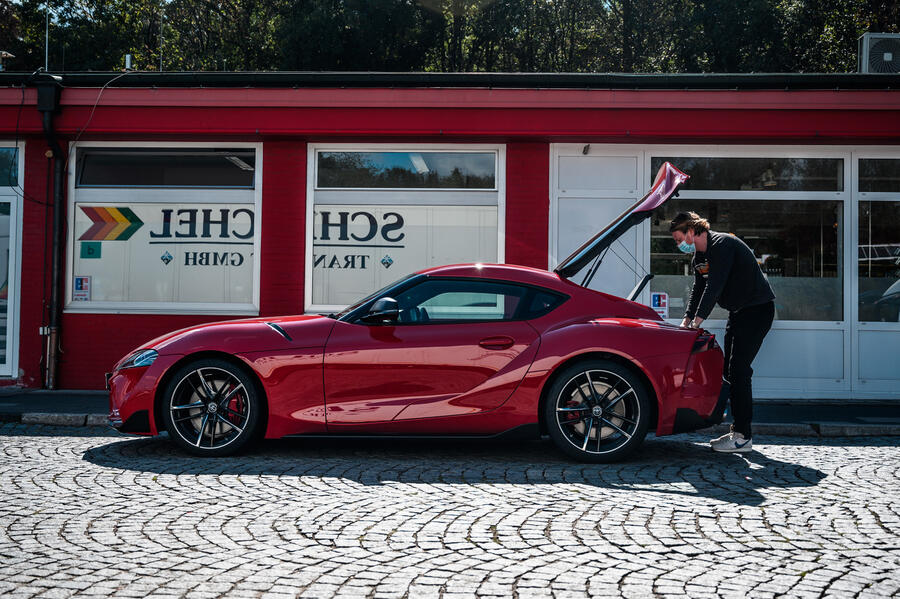
It isn’t what you think - 16th September 2020
Four weeks of driving have confirmed in dynamics terms what the Supra’s long-nosed, cab-rearward silhouette suggests: that the car’s personality is more grand tourer than out-and-out sports car. Despite the aggressive bodywork, the Supra is surprisingly softly sprung, particularly at the rear, which is a pleasant surprise in the context of day-to-day driving.
Mileage: 1266
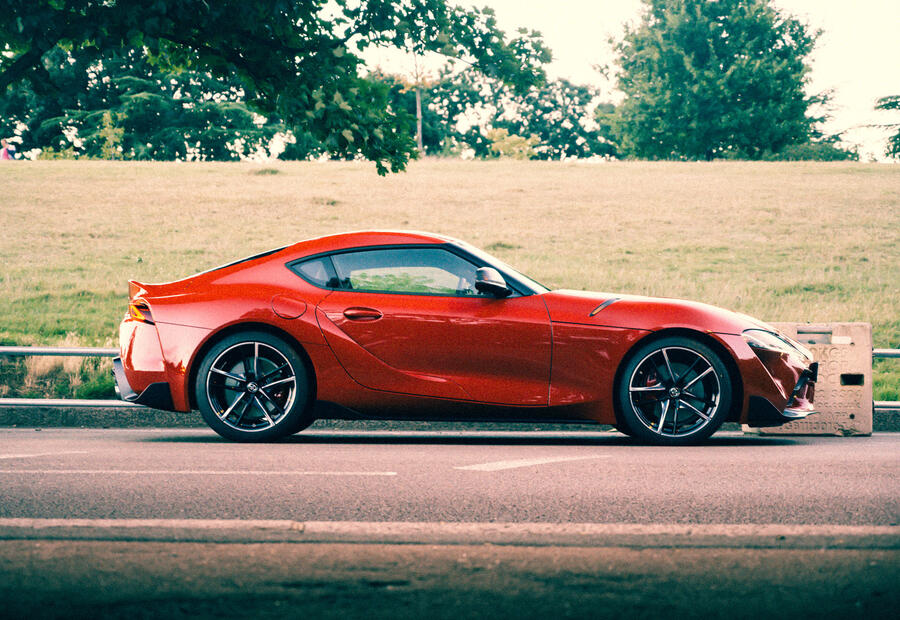
Welcoming the Supra to the fleet - 9 September 2020
Let’s suppose we played car word association. If I said ‘996 GT2’, you might say ‘hedgerow’. If I said ‘Lotus Elise’, you might say ‘head gasket’. And if I said ‘Supra’, you would say?
I’m certain the more mischievous among you would say ‘BMW’, and shortly we’ll address the reasons for that, but until very recently, most of us would probably have said ‘tuner’, or similar. And we can squarely blame the Mk4 A80 Supra for that.
The Supra was born in 1978, when Toyota gave the Celica extra snout to make space for six cylinders. Yet more so than that original car, and more so even than the fact the A70 Supra was at one point an exotic Group A World Rally car, it was the curvaceous A80 Supra of the 1990s and an inventive Japanese domestic aftermarket scene fantastically corrupted with cash that made the name famous. Back then, if it could be imagined, it could be done, and one of the many dubious high-water marks for this feral corner of the car universe occurred not in Japan but in 1999, near Peterborough.
Having shipped his gold-painted ‘Top Secret Co’ Supra and its 900bhp straight-six (ahem, Nissan-sourced) to Britain, Kazuhiko ‘Smokey’ Nagata nailed 198mph on the A1 M at four in the morning. To nobody’s surprise – not even his, you have to imagine – old Smokey was arrested, tried that very afternoon and deprived of his licence (although astonishingly, no custodial sentence was forthcoming). The press went wild: Max Power readers had a new hero, the tabloids had their ultimate villain and the A80 Supra was core to it all. That flat-out run is still the fastest and most unhinged speed ever recorded on this country’s roads.
Back in Japan, the Castrol TOM’s Supra competing at the time in Super GT quickly became one of the most recognisable racing cars in the world. And then, two years after Nagata’s infamous run, the Mk4 Supra made a cult appearance in the Hollywood mega-hit The Fast and the Furious. In a scene that now has more than three million views on YouTube, Paul Walker’s Brian O’Connor out-drags an F355 Ferrari in his souped-up Toyota. The Italian supercar gets roasted in oh-so-satisfying fashion. It’s great. To watch the film is to fall for the Supra, and so the car’s legend as an illicit aftermarket delicacy was fermenting very well indeed.
Of course, we know what happened next. Toyota let the trail go stone cold, seemingly forgetting how to build a serious performance coupé. Instead, it gave us the lively but too junior MR2, an inexplicably front-driven Celica and finally the excellent but wouldn’t-trouble-a-Golf-GTI GT86.
It therefore isn’t hard to fathom why anticipation was at fever pitch when an A80 Supra successor was finally announced in 2018. And here we are, two years on and with our very own A90 ‘GR’ Toyota Supra. As a licence-less teen who fell for the old Supra back in its heyday, the mere arrival of this car already feels like the end of a journey.
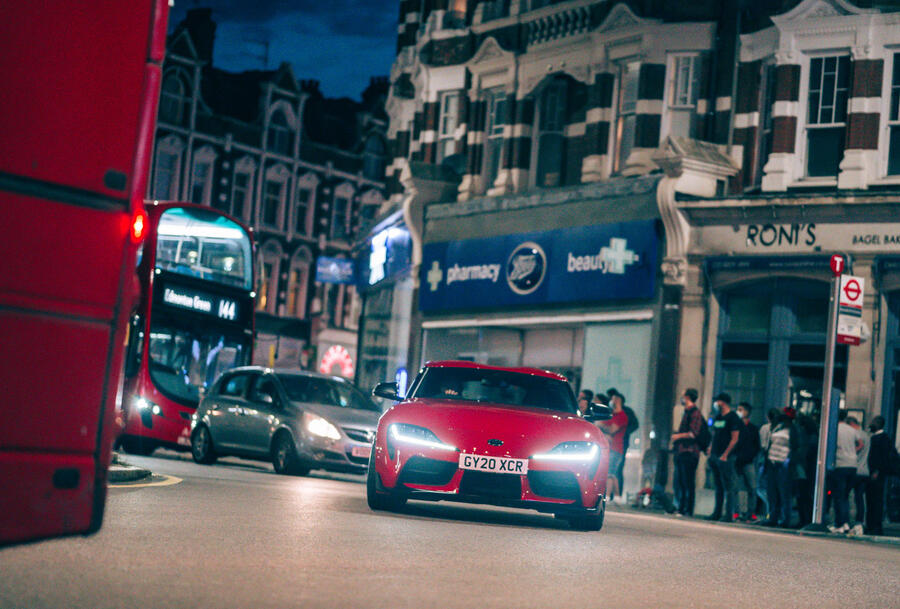
This juicy Prominence Red Supra comes in Pro specification, with extra leather, a JBL sound system, a head-up display and wireless phone charging. The asking price is £54,960. It drops the reborn Supra into a shark pond of competition. Think Alpine A110, BMW M2, Porsche 718 Cayman and, a little traitorously, BMW Z4 M40i. Because an A90 Supra could only ever come about on the condition that it would be profitable for Toyota almost from the start, an arrangement was made with BMW. Simply, the Z4 and Supra would be co-developed.
The crux is that the two cars share their engines, chassis and electronics. They are indeed twins, although most of the core parts are from the German side of the family tree. To what extent and in what precise manner this influences the Supra’s character is one of the key questions we’ll answer. After all, nobody wants a Z4 in drag, and in fairness, our prior experience of the new Supra suggests that isn’t the case. At least, not entirely the case.
First impressions? Frankly, the exterior design could hardly be less Germanic. In fact, being curvy like its predecessor but also rakish in the modern way, the new Supra could only be Japanese. It looks stunning after nightfall in London, with contours that interact with street lighting to produce an effect that photographer Olgun Kordal says he usually only sees in a studio setting.
And, of course, though its rivals are numerous and talented, the Toyota isn’t exactly toothless. As a front-engined, cab-rear, two-seat coupé, it has classic GT kerb appeal before it even turns one of its 19in wheels. In terms of hardware, the single-turbo 3.0-litre straight six makes 335bhp, which is put to the road through an electronically controlled limited-slip differential between the rear wheels, which themselves are shod in Michelin’s excellent Pilot Super Sport tyres. The weight distribution is also said to be very near perfect and the wheelbase to track width ratio is almost identical to front-engined handling pin-ups such as the Ferrari 575 Maranello. The GR Supra is also sensibly sized. It’s the same length as the Cayman to the millimetre, and about the same width. The wheelbase is also shorter than that of the GT86, if you can believe it.
It all points to a car that should not only be seriously appealing from the driver’s seat but also pretty broad-batted. What we’ll discover here is how well that appeal spreads itself across the spectrum of everyday use. That and whether Toyota was right to revive the name of arguably its most storied and desirable car.
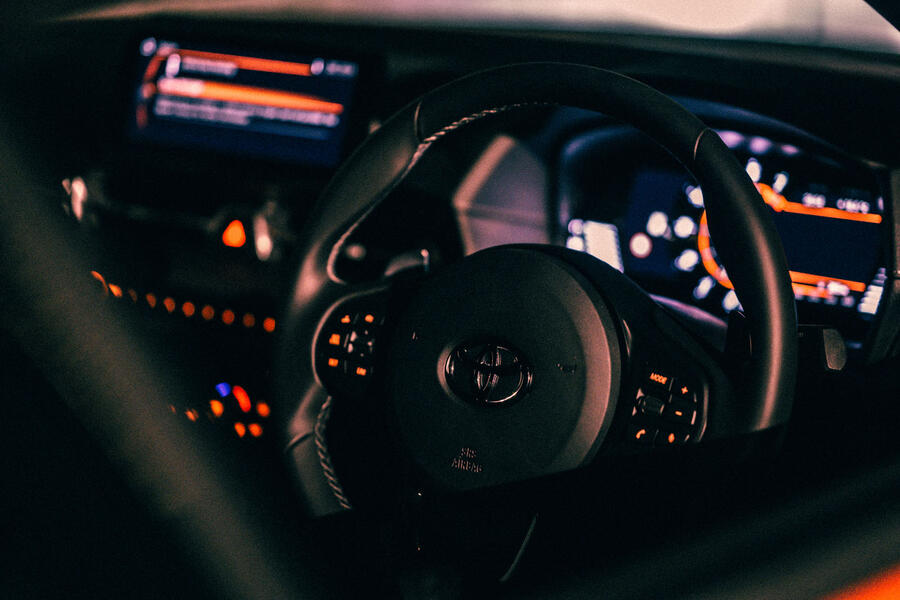
Second Opinion
I really liked the new Supra when I first drove it, which would normally be a good thing. Problem is that I absolutely love its two strongest rivals: the Porsche 718 Cayman and Alpine A110. It would be very interesting to put it up against a facelifted Jaguar F-Type, though. The outcome of that might be too close to call.
Andrew Frankel
Toyota GR Supra Pro specification
Prices: List price new £54,340 List price now £54,340 Price as tested £54,960
Options: Special paint (Prominence Red) £620
Fuel consumption and range: Claimed economy 34.4mpg Fuel tank 52 litres Test average 32.1mpg Test best 37.3mpg Test worst 27.8mpg Real-world range 367 miles
Tech highlights: 0-62mph 5.2sec Top speed 155mph (governed) Engine 6 cyls in line, 2998cc, turbocharged, petrol Max power 335bhp at 5000-6500rpm Max torque 368lb ft at 1600-4500rpm Transmission 8-speed automatic Boot capacity 290 litres Wheels 9.0Jx19in (f), 10.0Jx19in (r) Tyres 255/35 ZR19 (f), 275/35 ZR19 (r) Kerb weight 1495kg
Service and running costs: Contract hire rate £1069 CO2 170g/km Service costs none Other costs none Fuel costs £1025 Running costs inc fuel £1025 Cost per mile 19 pence Faults none
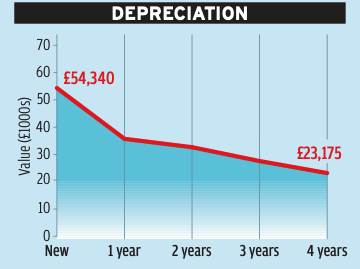

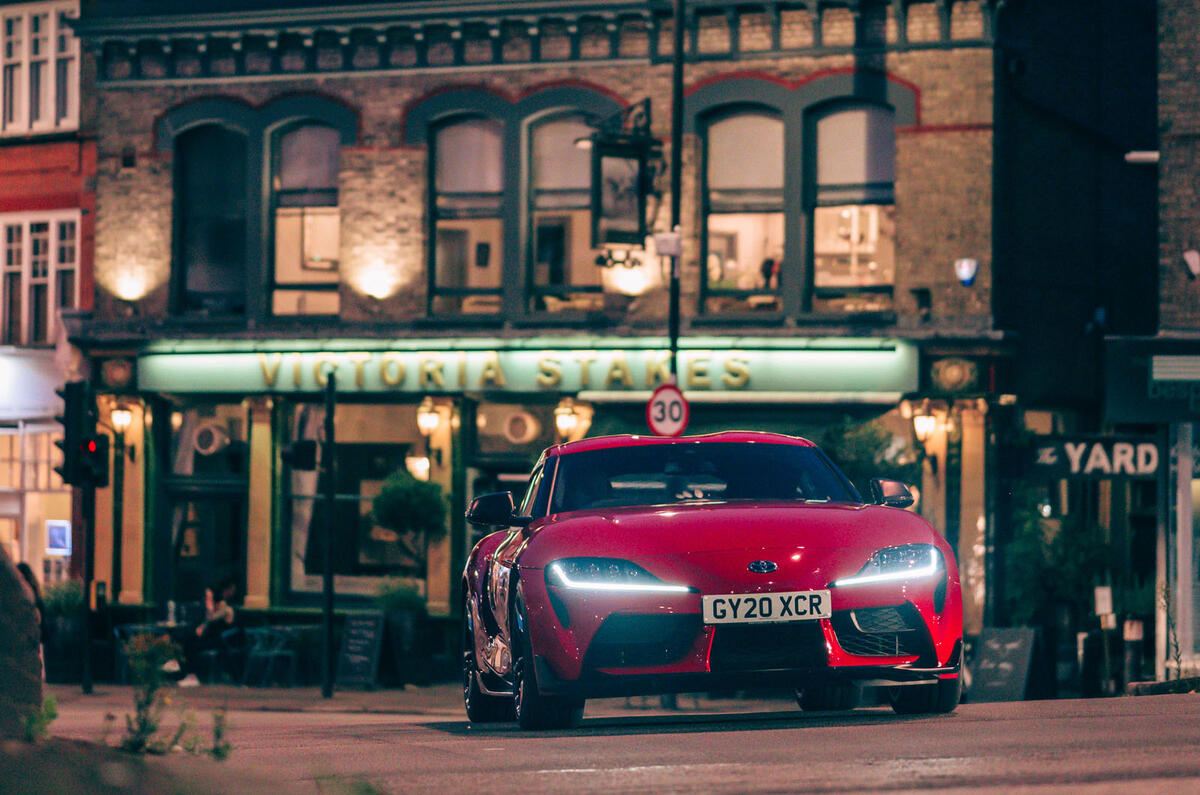
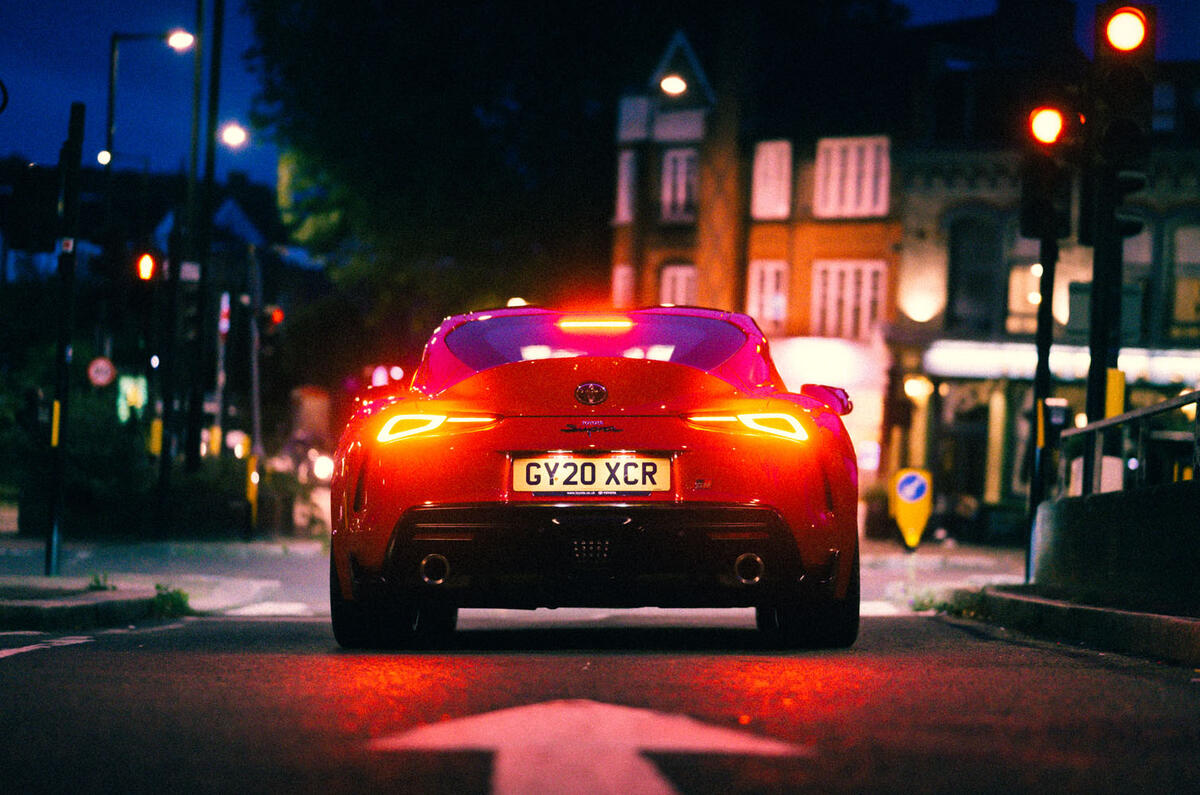
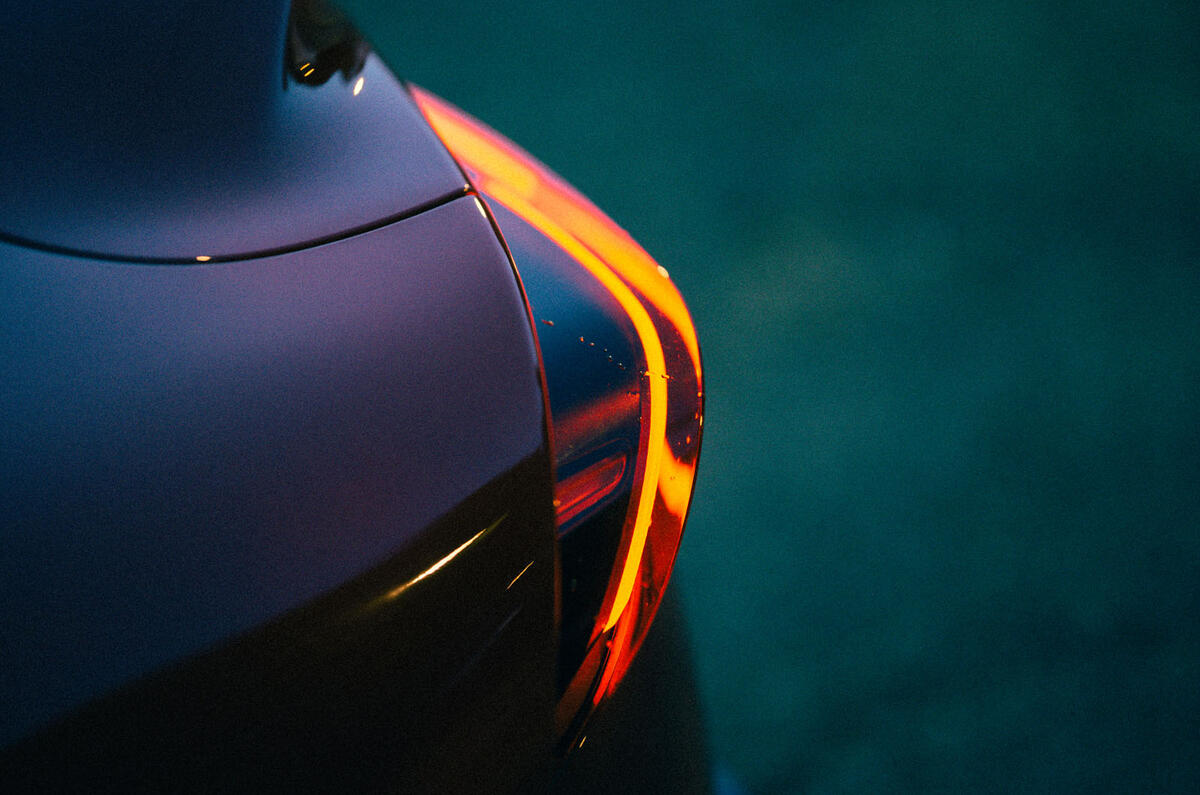
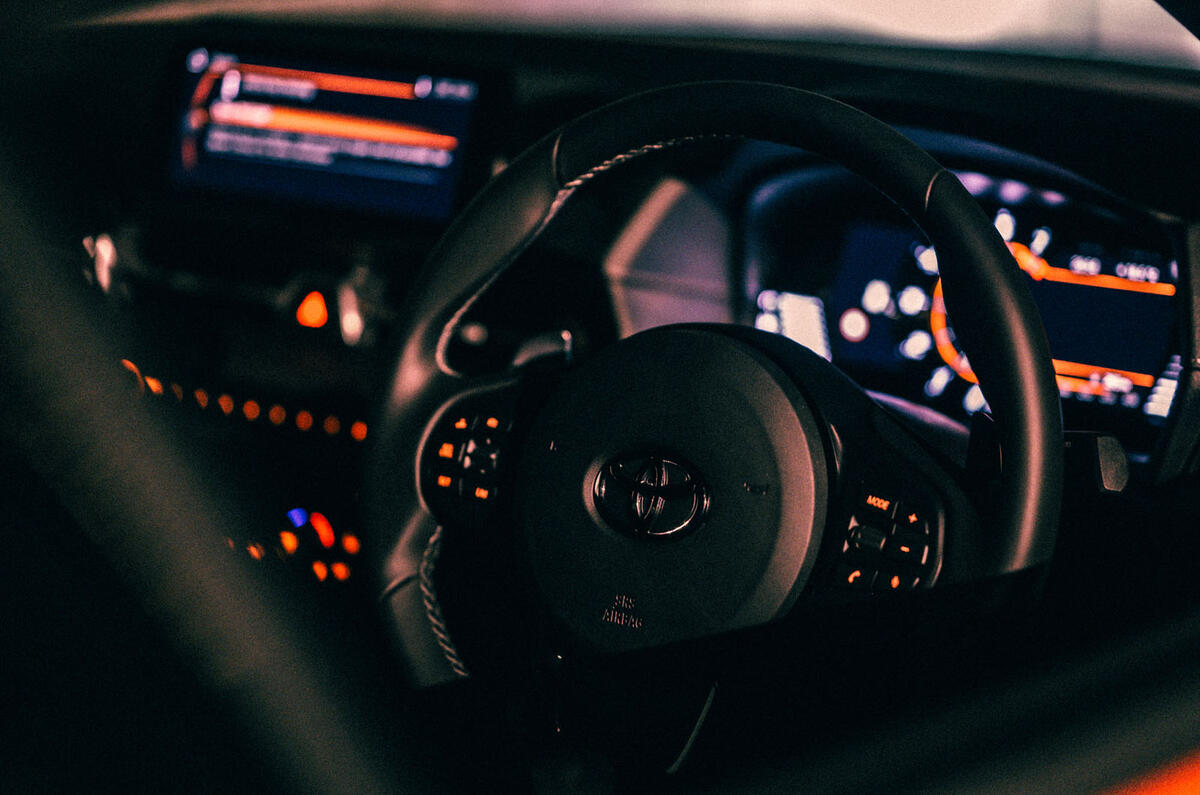
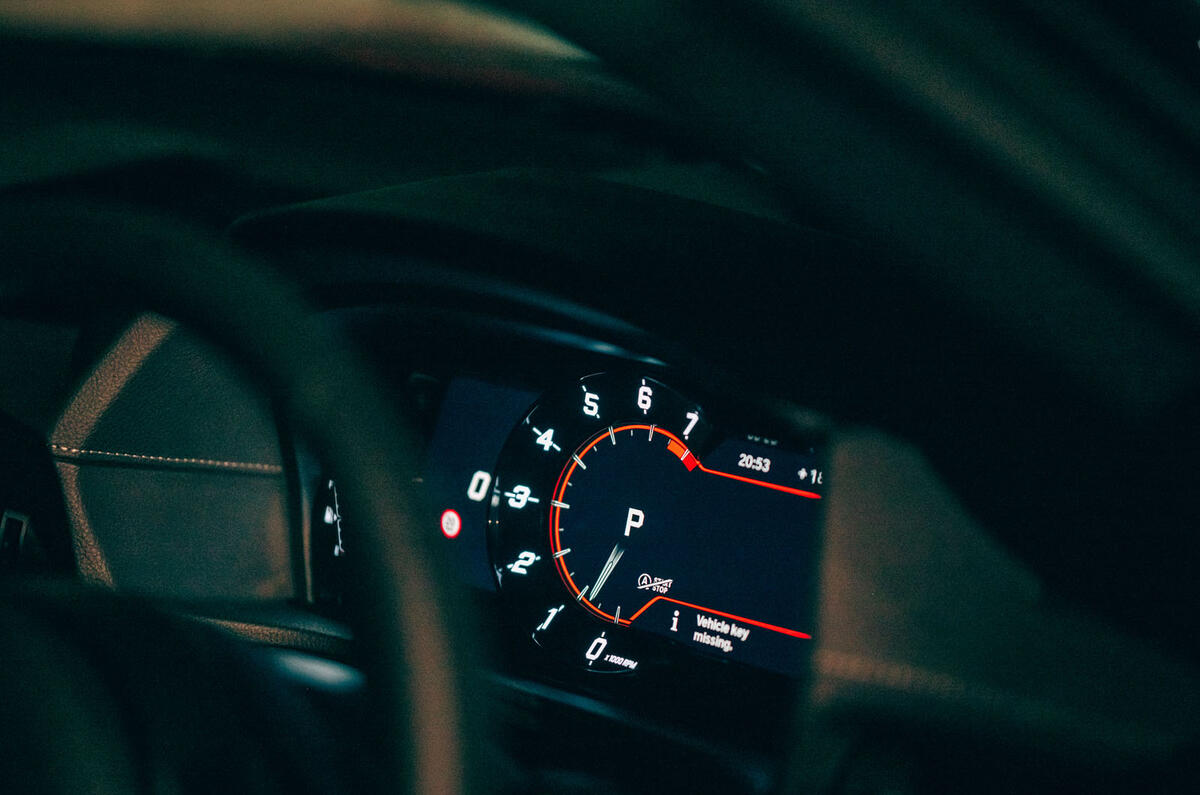
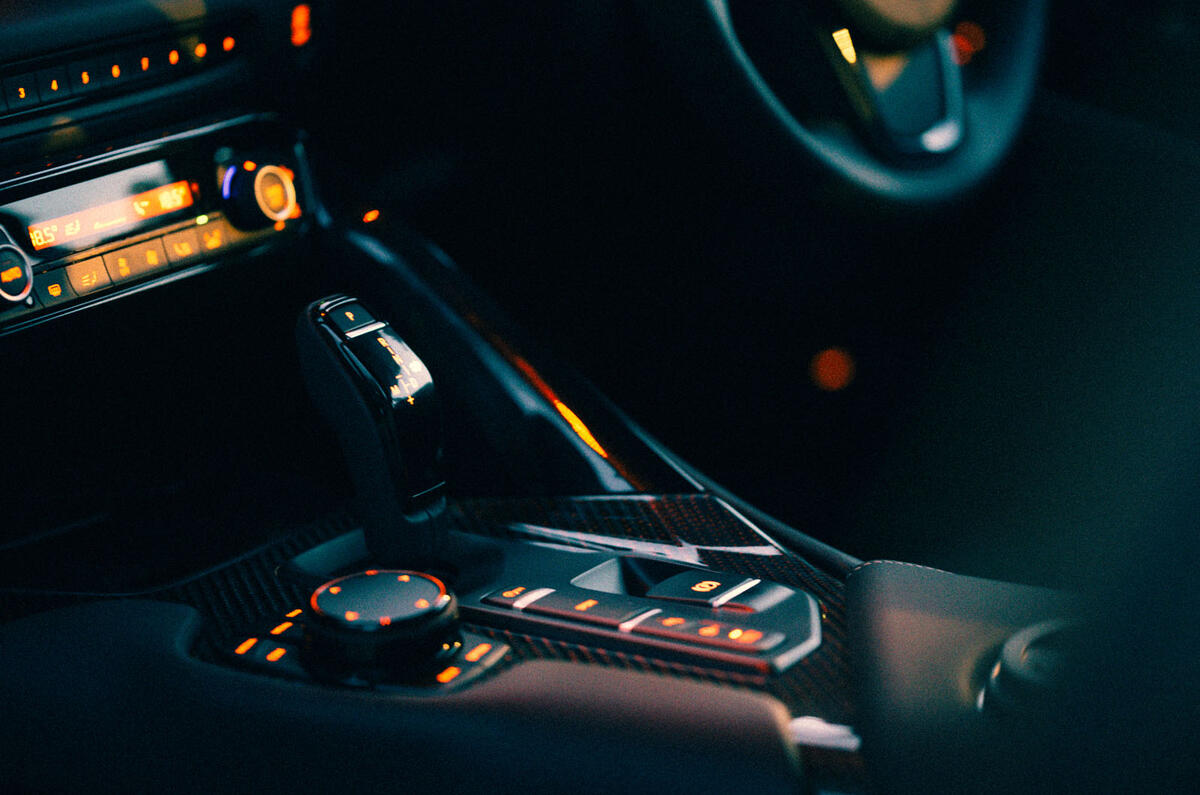
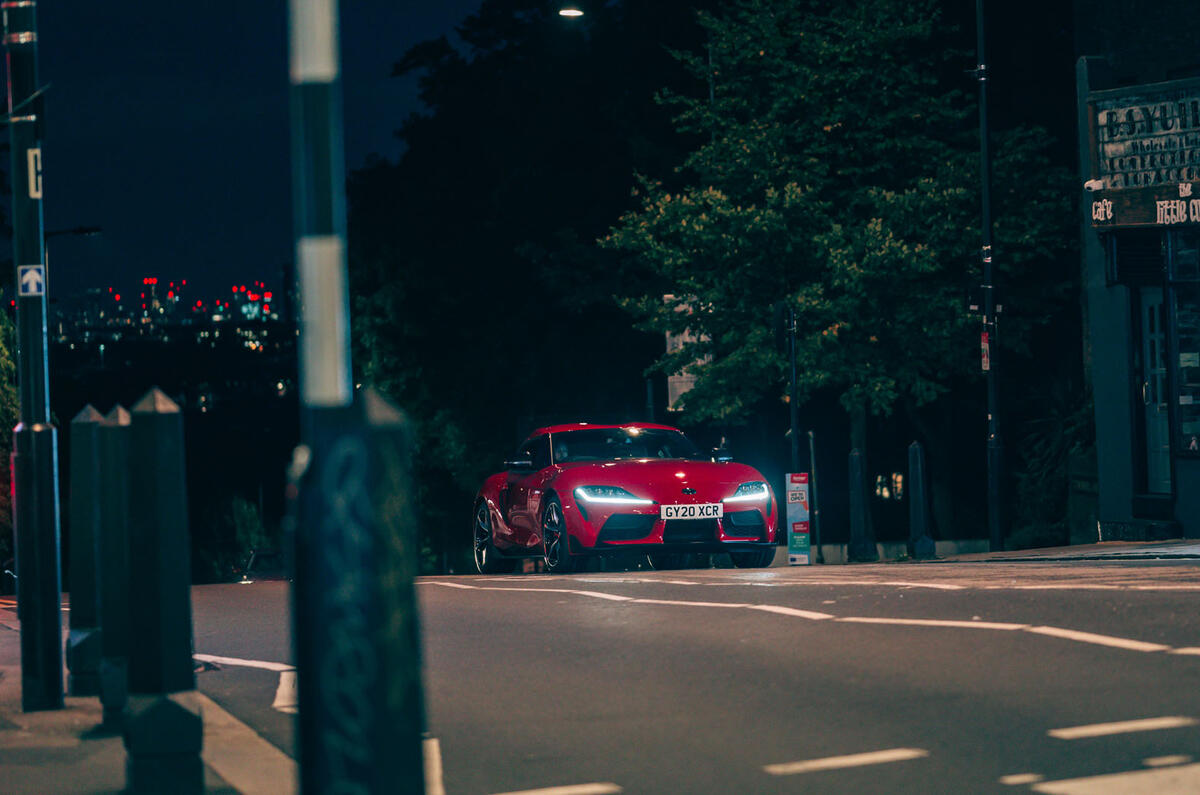
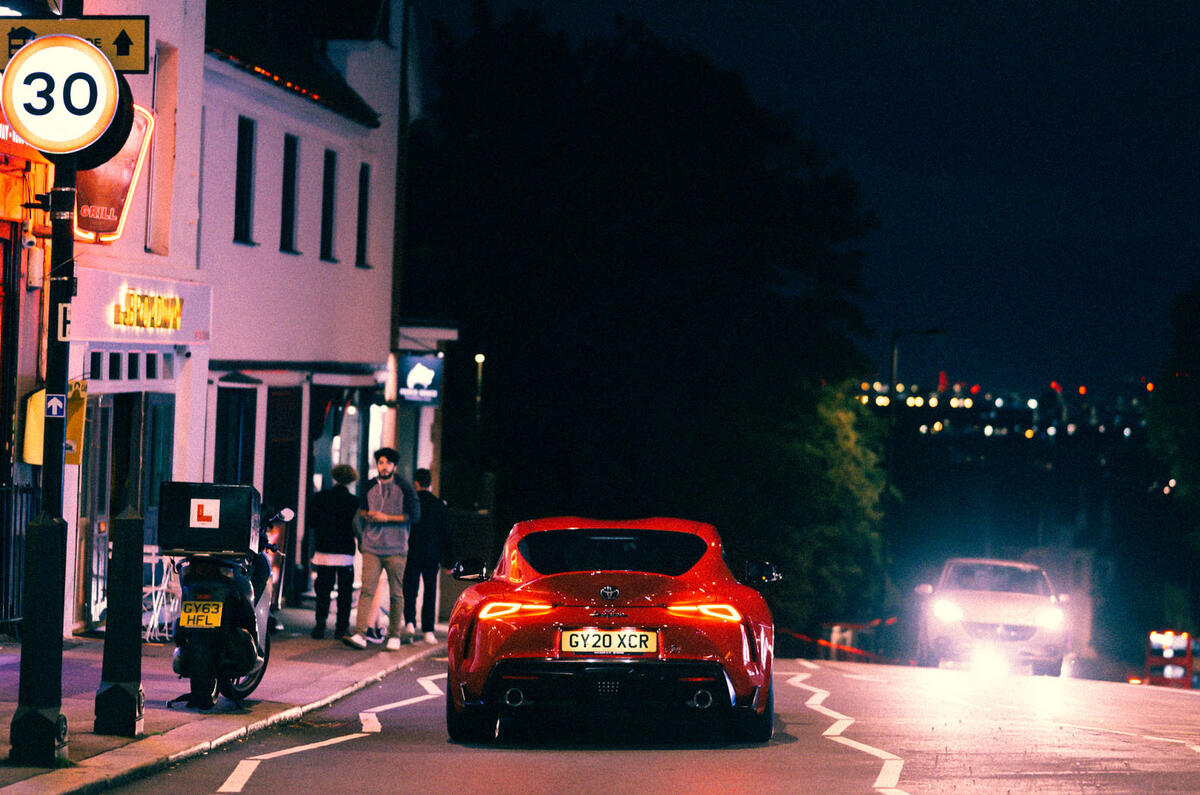

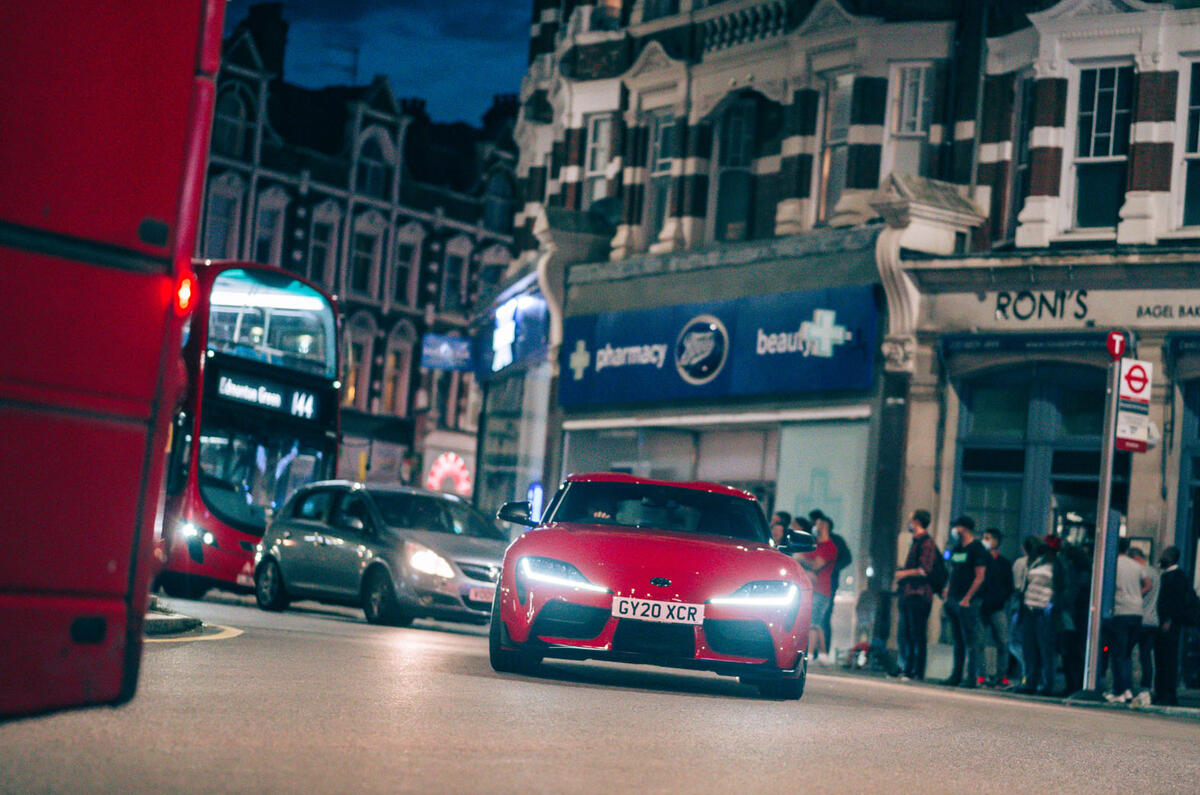
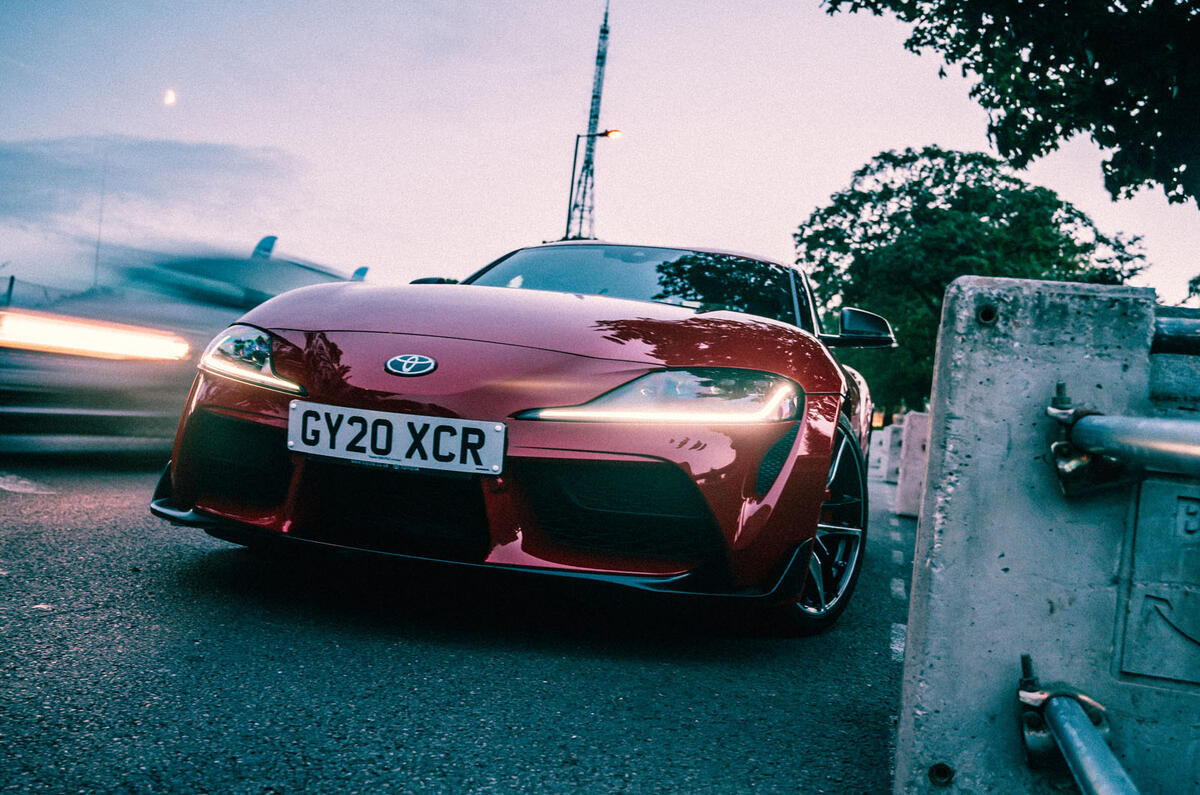


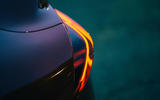










Join the debate
Add your comment
Would be interested to see it tested against a Bullitt Mustang. Similar sort of finance deals available. Where the Supra maybe falls down against the Cayman and the A!pine as a sportscar maybe it's best viewed as a cut price GT car.
So predictable
Interesting article until the mention of the new 4 Series - at which point comes the seeming compulsory cliche of criticising the grille. Change the record please.
simple reasoning
And whats wrong with a BMW interior? Beats any Jap interior by a big margin. Chances are you've never owned a BMW anyway, so you're sitting in something entirely unfamiliar in that case surely?
If you want it, youll buy it. It seems like if you don't want it though, the internet will be the first to know.
Toyota dont make 6 cylinder
Toyota dont make 6 cylinder engines? So what powers the Camry, the Avalon, the Landcruiser, and most Lexus models too. Then there is the 6 pot Toyota engine Lotus use.